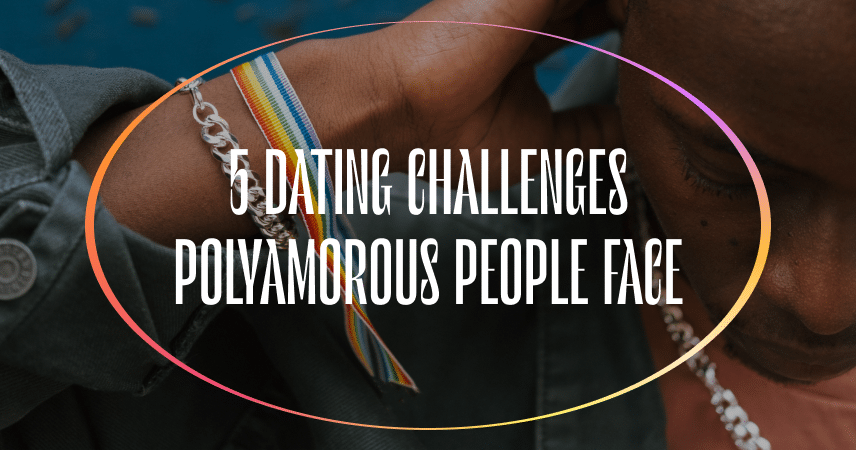
Polygamy should not be confused with polyamory. These are people of all shapes, sizes, religions, political affiliations, and gender identities. The one common factor that makes them a community is that they are all engaged in polyamorous dating relationships – romantic, sexual, platonic, or a combination – with multiple partners.
Is polyamorous dating one big happy free-for-all where people just move among their partners, keeping some for the long-term, breaking up with some, adding new ones, etc.? No, that’s not really how it works.
In fact, those who are involved in polyamorous dating can lead a pretty complicated life, facing challenges that no monogamous couples face.
So let’s unpack these challenges. If you are thinking about entering into such a lifestyle, it will be good to be prepared. Here are your five dating challenges. Note the level of these challenges will vary depending on multiple factors – how many partners and other life obligations for starters.
Coming to Mutual Agreements Regarding Boundaries
This challenge relates to the details of the relationship. What will be allowed and what will not? What types of relationships are okay and which are not? Here are just a few examples of the things that must be considered:
-
Will there be threesomes?
-
Will partners maintain their own residences or will some live together?
-
Will there be one major partner with multiple minor ones?
-
Will sexual events be announced ahead of time to a major partner? And where will they take place?
-
Will regular dating be allowed? You know, dinner out, pub crawling, movies, and such?
-
When one partner adds more relationships, who is to be informed?
-
What are the requirements for health and safety?
-
What types of gender identities are okay and which are not?
You can see how complicated this can all get. But as they say, the “devil is in the details,” and nothing can be truer than in polyamorous dating. It is likely that these mutual agreements may have to be revised at times.
Scheduling and Time Management
Every individual in a polyamorous dating relationship has obligations outside of those relationships. They have jobs/careers; they may have children who must be cared for and transported to school and activities; they have social groups and organizations to which they belong or for which they volunteer; they may be in school. Juggling all of this and still finding time to meet their own romantic/sexual needs as well as those of their multiple partners.
All of this can become a scheduling and time management nightmare unless you are highly organized and can carve out the time you need for dating your multiple partners.
Communication
Honest and genuine communication is a challenge for monogamous couples. Now multiply this by as many individuals involved in polyamorous dating. And good communication also takes time commitments. Certainly, everyone involved in polyamorous relations does not have to get together and have community-wide communication sessions. Many of them may not even want to know who these others are. But everyone involved romantically and/or sexually with someone in this lifestyle must be honest about needs, wants, limitations, etc. Without frequent communication, the results can be distrust, misunderstandings, anger, and frustration.
Jealousy
People do become possessive in their relationships. In a polyamorous situation, it is easy for a needier member to become jealous of the time their partner(s) spend with others. Jealousy is a particularly destructive emotion, and it has led to far more than one breakup, even among monogamous couples.
If you are experiencing jealousy, then it may be time to make that known to a major partner, if you have one, and give them the opportunity to respond to what you feel you need. If that partner does not want to return to a monogamous relationship with you, then you have a choice. You may either seek out therapy to deal with this emotion or leave the relationship and look for a monogamous dating relationship that will meet your needs.
Breaking Up
Just like monogamous relationships, polyamorous ones also face break-ups, and navigating those breakups and be complicated, hurtful, and, in most instances result in what Kathy Labriola, author of The Polyamory Breakup Book, high stakes poly dominoes. More on that in a minute.
Breakups in polyamorous relationships can occur for the same reasons they do in monogamous ones, but there are some unique to polyamory – picking the wrong partners, one partner falling in love with a monogamist, disagreements over “terms and conditions,” any partner not getting sexual needs met, and, yes, jealousy.
When one person in the relationship wants out, according to Labiola, it is most common that the entire relationship breaks up – thus the term poly dominoes. The whole dynamics of the relationship change.
So, how to break up peacefully? It can be done, if all partners have strong self-esteem and function well in other areas of their lives. They may miss the relationship but they have the emotional capacity to move on.
The challenge comes when one or more partners are insecure and too dependent upon the relationship for their happiness and security. For that person, the breakup will be painful – so painful that therapy should be an option. If the other partners are mature, then they might be in a position to help this person get through the breakup.
It’s Complicated
Anyone who believes that the polyamorous dating scene can be handled with ease had better think again. There are these challenges that must be considered. If they are handled well and in advance, polyamorous relationships can be very successful and meet the needs of everyone involved. If you are new to such a relationship or considering becoming involved in one, you need to look over this list and be sure that you can handle all of these challenges before you move ahead. Polyamory isn’t for everyone.





